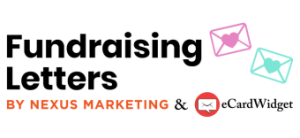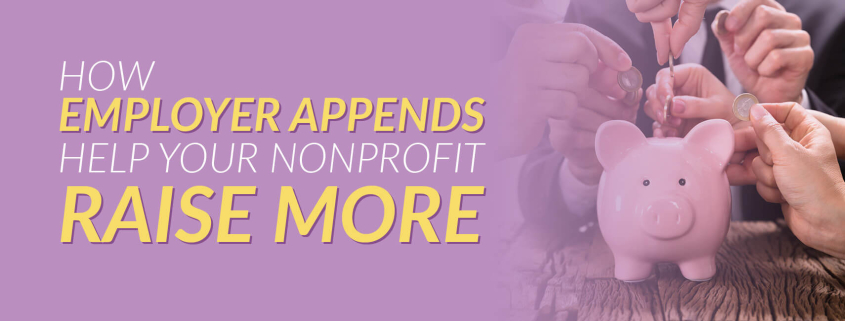How Employer Appends Help Your Nonprofit Raise More
Is your nonprofit making the most of its fundraising opportunities? With employer appends, you can use donor data to improve fundraising efforts.
Employer appends use donor data to give nonprofits information about their donors’ employers. This includes information about matching gift programs, a corporate social responsibility program that allows your donors to double gifts at no extra cost. The employer append process can be a challenge if you’re taking it on alone, but there are plenty of great services to consider.
Whether you are a beginner or an expert in data-driven fundraising, this guide is a great resource for your nonprofit. In this piece we’ll discuss:
- What are employer appends?
- Employer Appends for Nonprofits: Using Donor Data in Fundraising
- Data Append Services: Our Top Picks
Employer appends could be the thing your nonprofit needs to elevate its fundraising efforts and boost revenue. Let’s get started with an overview of employer appends.
What are employer appends?
Employer appends add data about donors to your organization’s existing database. More specifically, these appends include information about donors’ employers.
The insights found through employer appends are beneficial to nonprofits in many ways. The main advantage for nonprofits is identifying possible corporate social responsibility (CSR) opportunities.
Employer appends are easy to understand, but it may not be clear why they are important. The next sections focus on why employer appends are valuable and what you need to get started.
Why are employer appends valuable?
Capitalizing on CSR opportunities is one of the biggest reasons to use employer appends. But, employer appends offer other valuable insights. Pieces of information like a donor’s job title or their general industry can provide valuable information as well.
Here’s how the main pieces of information provided by an employer append can boost fundraising for your nonprofit:
- Employer name: Learning a donor’s employer’s name unlocks a wealth of information about their CSR programs. Once you have access to this information, your organization can research how the employer makes good on its CSR promise. For example, if you discover that many of your donors work at the same employer, consider asking that employer to host a sponsored event with your nonprofit.
- Job title: A donor’s job title gives away a lot of information about them. First, their position indicates how much leverage they have at work— would they be the appropriate avenue for a possible partnership? Second, their role can roughly demonstrate the donor’s financial giving capacity.
- Matching gift information: This information tells you whether a donor’s employer offers a matching gift program. These programs fall under the umbrella of CSR and mean that employers will match their employees’ gifts to nonprofits. If you and your donors are aware of these programs, your organization can double its revenue at no extra cost to you or the donor.
Learn these key insights by simply running an employer append. Then, your nonprofit can begin to capitalize on CSR opportunities and learn more about its supporters.
What is needed for an employer append?
Employer appends supplement the donor data you already have. But, there are a few pieces of data you need before getting started. The most important donor information is donor email and mailing addresses. If you don’t have this information, check out NPOInfo’s email and address append services.
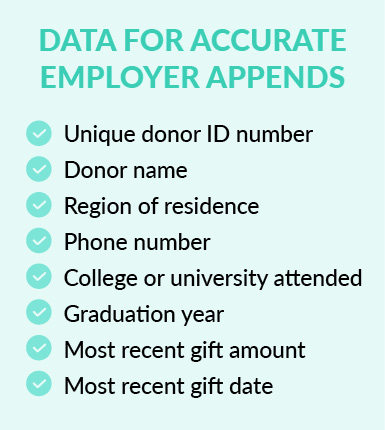
While these basic pieces of data are the most important, many data appending services ask for more data points. Typically, the more data you can provide, the more accurate the employer append will be. This includes information such as:
- Unique donor ID number
- Donor name
- Region of residence
- Phone number
- College or university attended
- Graduation year
- Most recent gift amount
- Most recent gift date
Don’t worry if your nonprofit doesn’t have every data point on this list as they aren’t all necessary. However, you can keep these data points in mind as you gather more donor data going forward, to boost the accuracy of any future employer appends.
Keeping data clean and organized can also expedite the employer append process. Data hygiene refers to taking steps to regularly clean data, making it more efficient to analyze. Good data hygiene includes practices like removing outdated or irrelevant data, maintaining a standard means of data entry, and keeping data organized.
Employer Appends for Nonprofits: Using Donor Data in Fundraising
Donor data shouldn’t go untouched on your organization’s computers, especially when it can be so useful. There are plenty of practical ways to use donor data in your fundraising strategy. Investing in donor data analysis will be reflected in increased fundraising opportunities and revenue.
Fundraising Data Analytics
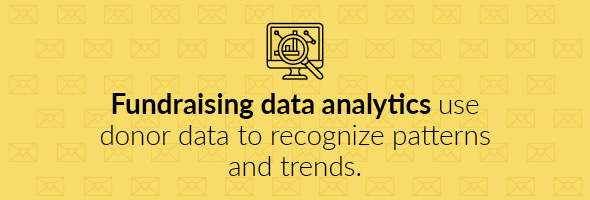
Fundraising data analytics uses donor data to recognize patterns and trends. These patterns inform nonprofits about how to shape or adjust their fundraising strategies. Good donor data is the foundation that fundraising data analytics is built on, so data upkeep should be a priority.
Within fundraising data analytics, there are three distinct types. Here is a quick breakdown of the three types of fundraising data analytics:
- Descriptive fundraising analytics: Donor data is used to classify donors. These classifications are usually made based on demographic information like age. Other factors like average gift size can also be used to group donors by their willingness to give.
- Predictive fundraising analytics: Predictive analytics are used to predict donors’ giving behaviors. These predictions are made based on past behaviors. Often, they use metrics like growth in donation size.
- Prescriptive fundraising analytics: Here, patterns, trends, and donor classifications are combined to create a strategy. In other words, this stage involves setting up a new and improved fundraising strategy based on insights from prior stages.
While employer appends are a small piece of fundraising data analytics, donor data is crucial to both. Build a strong foundation for analytics and revenue growth by gathering strong, organized data.
Capitalize on Fundraising Opportunities
Donor data can prevent losses on potential revenue opportunities. With employer appends, your nonprofit can identify these opportunities in time to use them.
Employer appends are great at catching matching gift opportunities. There is a lack of awareness about these programs amongst donors—with 78% of donors unsure if their company offers a matching gift program—making it difficult to bring in matching gift donations. The problem is even harder to address if nonprofits are unsure which of their donors have access to these programs.
To better understand just how valuable matching gifts are, check out Double the Donation’s matching gift statistics:
- Companies donate about $2-$3 billion in matching gift funds each year.
- $4-$7 billion in potential matching gift funds go unclaimed each year.
- Out of 250 multi-billion-dollar companies surveyed by Forbes, 92% offer some sort of matching gift program.
- 1 in 3 donors indicate they’d give a larger gift if they knew it was being matched by their employer.
- 84% of donors are more likely to donate if they know their gift will be matched.
- When you mention matching gifts in fundraising appeals, you can expect a 71% increase in response rate and a 51% increase in average donation amount.
Fortunately, employer appends allow you to tap into this incredible fundraising opportunity by simplifying the matching gift eligibility process. After identifying which donors’ workplaces offer matching gift programs, nonprofits can spread awareness of the programs. One way to do this is to send donors matching gift letters that urge them to take advantage of the programs.
In addition to matching gift programs, corporate social responsibility programs support nonprofits in other ways. Many companies actively seek out nonprofits to support with grants. Taking advantage of additional CSR programs is a great way to garner support from sources beyond individual donors.
Another common CSR program is a volunteer grant program. While matching gift programs match employee donations to nonprofits, volunteer grant programs incentivize employee volunteerism by donating to the nonprofits they volunteer with based on the number of volunteer hours they log. Employer appends can help you to identify which of your volunteers’ employers offer volunteer grant opportunities. Then, you can notify these volunteers to follow up with their companies by sending in a volunteer grant request.
Tailor Fundraising Campaigns
Certain pieces of donor data help nonprofits tailor their campaigns to their audience. Not only does this indicate a better understanding of your organization’s supporters, but narrowly targeting your audience can also be more effective. Knowing exactly who makes up your base of donors and what they respond to means that your fundraising efforts will be more likely to reach and impact them.
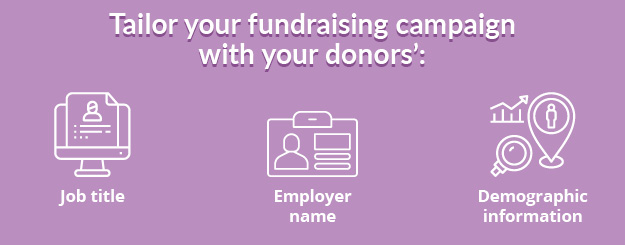
Here are a few pieces of information and their implications for tailoring your nonprofit’s fundraising campaigns:
- Job title: A donor’s job title demonstrates how financially capable they are of giving and how much decision-making power they hold at work. It is effective to target donors in high positions of authority. Not only are these donors likely more capable of giving, but they may also be able to implement more CSR initiatives at work.
- Employer name: Learning donors’ employers’ names provides insights into their connections to CSR opportunities. Tailor fundraising efforts towards people with access to CSR opportunities like matching gift programs.
- Demographic information: Information like age delineates important insights for targeting your nonprofit’s fundraising campaigns. For example, if your donors’ primary demographic is older people, online campaigns may not be successful. In this instance, it may be better to use mailers instead.
Donor data can be an extremely versatile tool as you work to improve your fundraising strategy. Don’t be afraid to get as much use as you can out of each data point— there is no harm in deriving multiple insights from one piece of data.
Grow Revenue Over Time
After incorporating donor data analysis into your nonprofit’s fundraising strategy, your organization should see growth in revenue.
Making the most of untapped fundraising opportunities like matching gift programs is one source of growth after a data append. These programs increase revenue by supplying your nonprofit with free money via your donors’ employers. After increasing awareness of matching gift programs, the number of donors taking advantage of these programs should increase as well.
Further, identifying your core audience and catering to their preferences will increase the amount of donations you receive. Reach these audiences in ways that will inspire them to engage with your organization.
Data Append Services: Our Top Picks
Taking on data appends by yourself can be overwhelming. Put your trust in a data append service — these teams of professionals can take the weight off your shoulders. Here are a few of our top picks for data append services.
Double the Donation
Double the Donation offers workplace giving-focused employer append services designed to help nonprofits uncover where their donors and volunteers work—an essential step in maximizing workplace giving opportunities. These services enhance your existing data by identifying employer information through advanced data matching, allowing you to surface workplace giving-eligible supporters who might otherwise go unnoticed.
Here’s what sets Double the Donation’s employer append solution apart:
- High Match Accuracy: Using a combination of proprietary data sources and intelligent algorithms, Double the Donation delivers highly accurate employer data that helps you confidently target the right donors.
- Seamless Data Syncing: The employer append service integrates directly with Double the Donation’s workplace giving automation platform, enabling automated follow-ups and real-time workplace giving insights based on newly appended employer data.
- Scalable Results: Whether you’re working with hundreds, thousands, or millions of records, the service is designed to scale—helping organizations of all sizes uncover more match-eligible supporters efficiently.
- Ongoing Value: Appended employer data can be used not only to fill in the gaps in your existing donor data but also to identify workplace giving opportunities, corporate sponsorship prospects, and more.
By enriching your donor database with employer information, Double the Donation helps you unlock hidden revenue streams across matching gifts, volunteer grants, and broader corporate philanthropy—making it a valuable asset for any nonprofit looking to grow through workplace giving.
NPOInfo
If you are a nonprofit in need of a quality data append service, look no further. NPOInfo has a team of highly skilled experts ready to take on a wide range of data append services. NPOInfo serves nonprofits, higher education institutions, healthcare organizations, and associations, giving it a leg up on services that lack nonprofit specialization.
If these services sound like something your nonprofit needs, NPOInfo might be for you. Reach out for a quote to get started.
Wrapping Up
Employer appends are the key to discovering who your supporters really are. After learning valuable insights like donors’ employer’s name, job title, and matching gift information, it is easy to take advantage of fundraising opportunities. However, employer appends are just the tip of the iceberg when it comes to using donor data in fundraising. Donor data can quickly become an invaluable tool in your nonprofit fundraising strategy.
Interested in learning more about data and matching gifts? Check out these resources:
- Sample Matching Gift Letter Templates. If you aren’t sure about how to notify donors about matching gift opportunities, this is a great place to start. This resource offers letter templates to get you started with capitalizing on matching gift opportunities.
- How to Win With Matching Gifts And Higher Education: A Guide. Matching gift programs may seem tricky to navigate as a higher education institution. This guide delivers seven great tips to ensure success.
- How to Advocate for a Matching Gift Program to Your Employer. Do you have supporters who are looking to encourage their employers to start a matching gift program? Share this resource with them so you can work together to earn more for your cause.
